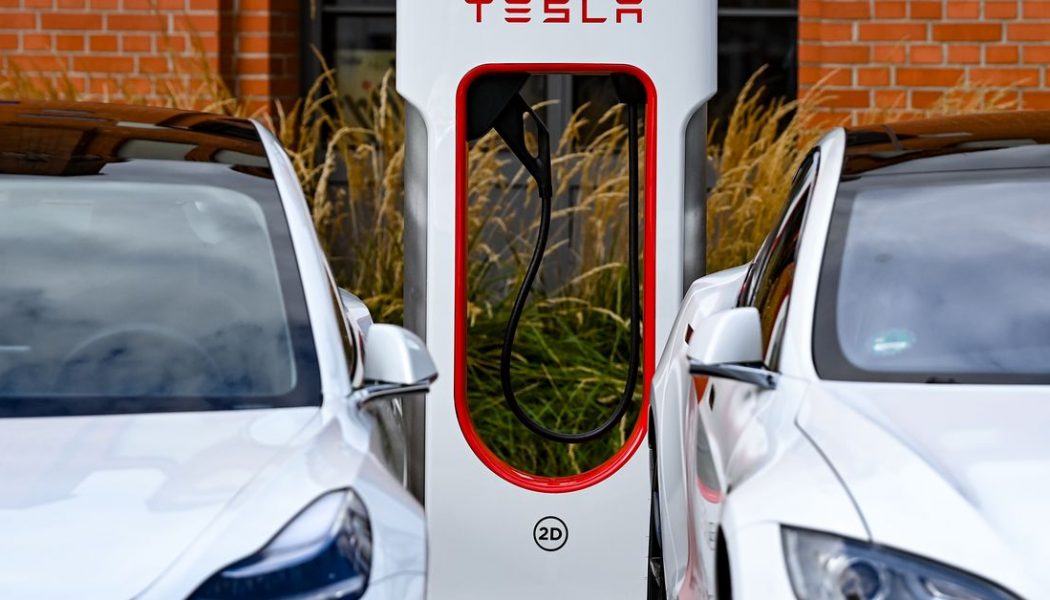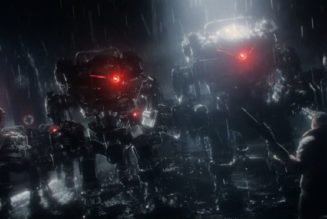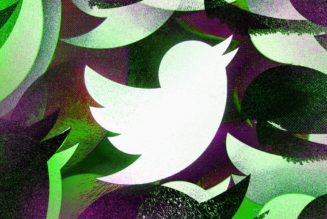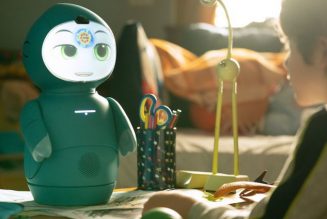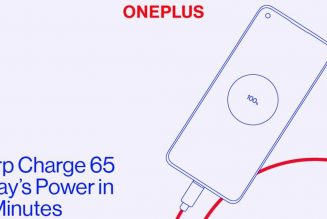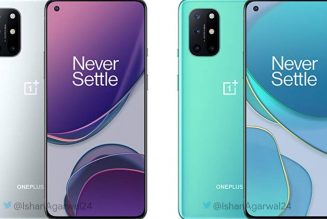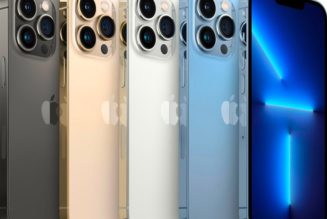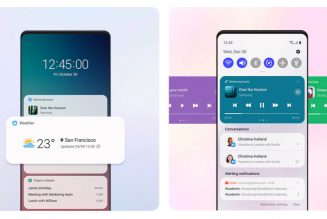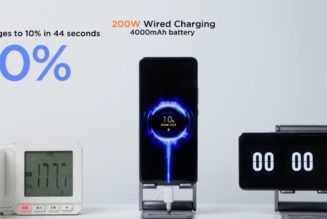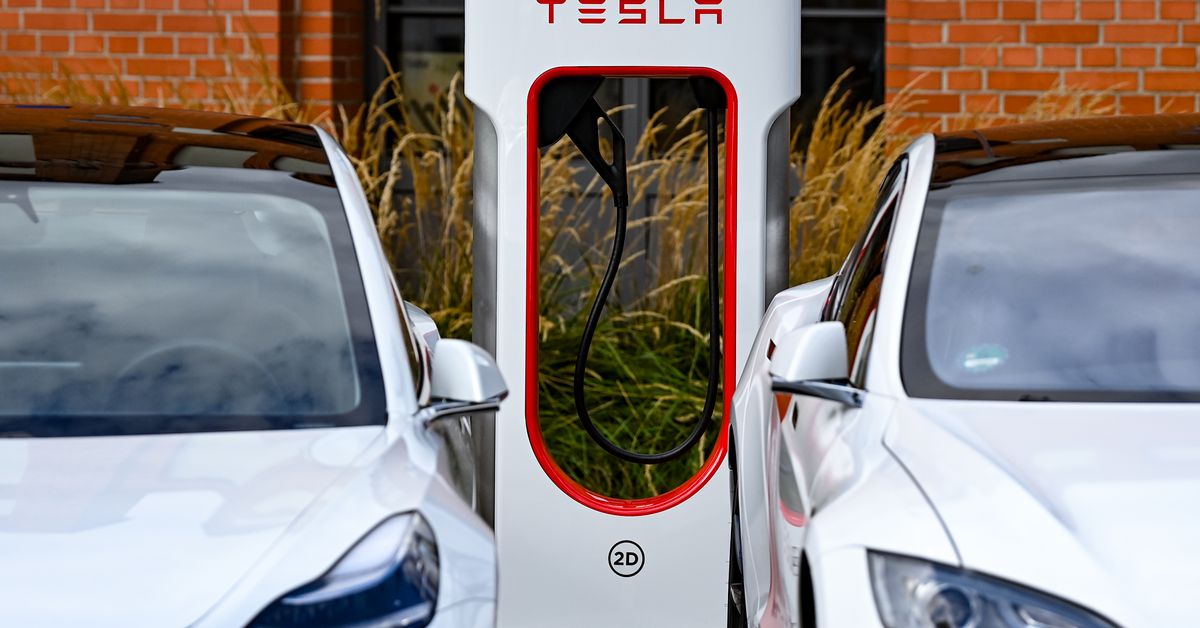
Tesla plans for its future electric vehicles to be able to both suck up power and spit it back out into the grid. Tesla didn’t specify when this capability would be available when CEO Elon Musk made the announcement during Tesla’s much-anticipated Battery Day event in Palo Alto, California.
But instead of hyping up this development, Musk downplayed how useful it would be for the company’s vehicles to be able to connect to the grid. “Vehicle-to-grid sounds good, but I think actually has a much lower utility than people think,” Musk said. He ostensibly wants consumers to continue buying Tesla’s Powerwall batteries for their homes, rather than using its EVs as batteries on wheels. “I think it’s actually going to be better for people’s freedom of action to have a Powerwall and a car,” said Musk. A lack of infrastructure and customer buy-in for cars that can offload unused energy to the grid could also be giving Tesla pause.
Despite Musk’s reservations, there’s a lot of potential for Tesla’s electric vehicles to do more than drive. A fully charged Tesla Model S Long Range Plus might be able to drive 400 miles on a single charge of its 100 kWh battery pack, but most commuters aren’t driving nearly that far in a day. All of that leftover energy could be better used keeping the lights on in the driver’s home during a sudden blackout — an event that isn’t unusual in California during wildfire season. If Tesla owners can discharge their batteries to the grid whenever there’s peak demand, they might even be able to prevent power outages and make some money in the process.
“The amount of energy storage you have driving on four wheels is much more than any electric utility will ever build and put on the grid,” says Gerbrand Ceder, a professor of materials science and engineering at the University of California, Berkeley. “So it now starts to make sense that you use this as a resource to stabilize the grid.”
A decade ago, it might not be worth it for a Tesla owner to earn some cash by selling money to the grid because it shortened the life of the battery. Former Tesla CTO JB Straubel has been a skeptic for that reason. Ceder used to be a skeptic, too, but he’s not anymore. Now, batteries are hardy enough to be able to give energy back to the grid without losing much battery capacity in the process, according to Ceder. “Now you’re essentially purely making money doing vehicle-to-grid,” he says.
There is, however, still a lot of infrastructure that needs to be built so that electric vehicles can give back to owners’ homes and to the grid. For starters, Tesla will need to build new connected chargers, and homes would need additional hardware to be able to take in power from an EV battery.
Musk’s comments during Battery Day also suggest that the company doesn’t think its customers are hungry enough for vehicle-to-grid capabilities yet. “Very few people would actually use vehicle-to-grid,” Musk said during Battery Day. “We actually had that with the original Roadster. We had vehicle-to-grid capabilities — nobody used it.”
The assumption is that Tesla owners buy the car to drive it, not to use it as a battery. “It’s obviously very problematic if [in the morning] your car, instead of being charged, it discharged into the house,” Musk said.
“Tesla is intensely focused on customer experience,” Ryan Hledik, a principal at research consultancy Brattle Group who focuses on distributed energy technologies, wrote in an email to The Verge. “Anything that could threaten that – such as a car that isn’t fully charged when a customer expects it to be, or a battery that wears out sooner than expected – could be viewed by Tesla as unattractive at this stage.”
Tesla would also need enough customers on board to make an attractive offer to utilities that might buy their energy. Utilities have historically turned to gas-fired “peaker plants” to meet demand during energy shortfalls. “Both utilities and system operators don’t yet trust the performance of a bunch of distributed batteries in the way that they trust a single gas plant or some other type of centralized resource,” says Hledik.
Tesla may also have another, more self-interested motive for stalling on vehicle-to-grid capabilities. It might not want to cannibalize its Powerwall business, experts tell The Verge. If Tesla’s EVs can drive and provide backup power to its owner’s home, then why invest in a Powerwall?
Drew Baglino, senior vice president of Powertrain and Energy Engineering at Tesla, implied that its Powerwalls might be a better sell to utilities than its electric vehicles. “Remember that your car isn’t plugged in 24-7, so it’s kind of an unpredictable resource for the grid. It’ll have a value, but it’s not the same as a stationary battery pack,” he said yesterday.
Vehicle-to-grid capabilities could eventually set Tesla up to become an influential energy arbiter, says Ceder. Tesla’s become the biggest electric automaker in the world; it reached a milestone this year when it delivered more than 1 million cars globally. Together, its global fleet can operate like a massive virtual power plant.
But Tesla is already trying to do something similar with its Powerwalls. Tesla’s pilot residential virtual power plant in Australia has gotten positive feedback after saving residents up to 20 percent on their energy bills, according to an April report. The company set up solar and storage systems in more than 1,000 public housing properties, and it plans to expand to 50,000 more homes.
“I think many of us have expected Tesla to become a player in electricity arbitrage because in the end, that’s what they’ve set themselves up for,” Ceder says. “I always joke that Tesla was not really a car maker, it was really a battery pack maker.”
Tesla’s announcement comes as increasingly intense wildfire seasons make widespread blackouts more common across California, where Tesla is headquartered. “Right now there’s a real need for providing backup power that [batteries] can provide,” says Jeff Cook, renewable energy policy and market analyst at National Renewable Energy Laboratory.
If Tesla doesn’t meet the need first, others might. Nissan and Honda have both ventured into bi-directional charging. “You’re going to see more of this, I would argue, going forward,” Cook says.
